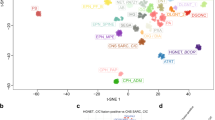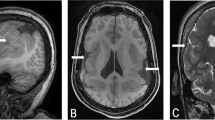Abstract
The loss of chromosome 10 is the most frequent genetic alteration found in malignant astrocytomas. In particular, the long arm of chromosome 10 was previously reported to have two or more common deletion regions where tumor suppressor genes may be located. In this study, we performed deletion mapping of 44 malignant astrocytomas using 12 microsatellite markers on chromosome 10q and demonstrated that the minimal common region of loss of heterozygosity (LOH) was present between D10S192 and D10S566 localized at 10q25.1. Subsequently, we have identified a novel gene, termed h-neu, within the region frequently deleted and found that h-neu encodes a protein with strong homology to the Drosophila neuralized (D-neu) protein. Northern blot and RT–PCR analyses revealed that h-neu mRNA was expressed at very low levels in human malignant astrocytoma tissues and the majority of glioma cell lines examined, while normal brains expressed h-neu transcript. Furthermore, DNA sequencing analysis of the h-neu transcript revealed one of the glioma cell lines, U251MG, had a single nucleotide substitution which resulted in an amino acid change from glycine (GGC) to serine (AGC) at codon 253. The D-neu gene is known to serve a critical function in neurogenesis in Drosophila, and loss-of-function mutations produce hyperplasia of primitive neuronal cells. These observations led us to hypothesize that h-neu gene plays a role in determination of cell fate in the human central nervous system and may act as a tumor suppressor whose inactivation could be associated with malignant progression of astrocytic tumors.
This is a preview of subscription content, access via your institution
Access options
Subscribe to this journal
Receive 50 print issues and online access
$259.00 per year
only $5.18 per issue
Buy this article
- Purchase on Springer Link
- Instant access to full article PDF
Prices may be subject to local taxes which are calculated during checkout
Similar content being viewed by others
Author information
Authors and Affiliations
Rights and permissions
About this article
Cite this article
Nakamura, H., Yoshida, M., Tsuiki, H. et al. Identification of a human homolog of the Drosophila neuralized gene within the 10q25.1 malignant astrocytoma deletion region. Oncogene 16, 1009–1019 (1998). https://doi.org/10.1038/sj.onc.1201618
Received:
Revised:
Accepted:
Published:
Issue Date:
DOI: https://doi.org/10.1038/sj.onc.1201618
Keywords
This article is cited by
-
Whole-genome sequence analysis unveils different origins of European and Asiatic mouflon and domestication-related genes in sheep
Communications Biology (2021)
-
Neuralized family member NEURL1 is a ubiquitin ligase for the cGMP-specific phosphodiesterase 9A
Scientific Reports (2019)
-
Not(ch) just development: Notch signalling in the adult brain
Nature Reviews Neuroscience (2011)
-
Expression analysis of genes involved in brain tumor progression driven by retroviral insertional mutagenesis in mice
Oncogene (2005)
-
p53 gene mutation and ink4a-arf deletion appear to be two mutually exclusive events in human glioblastoma
Oncogene (2000)



